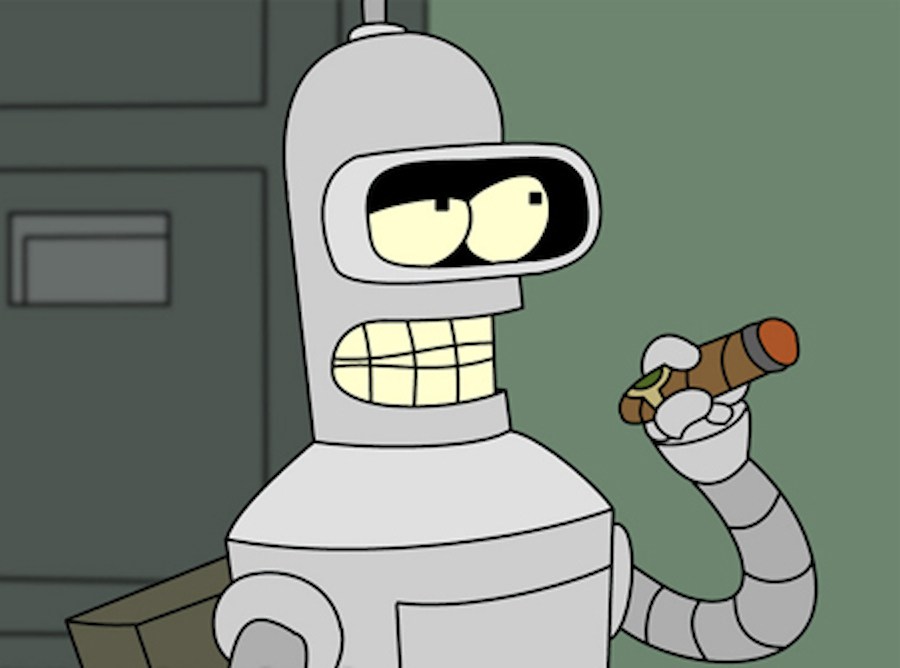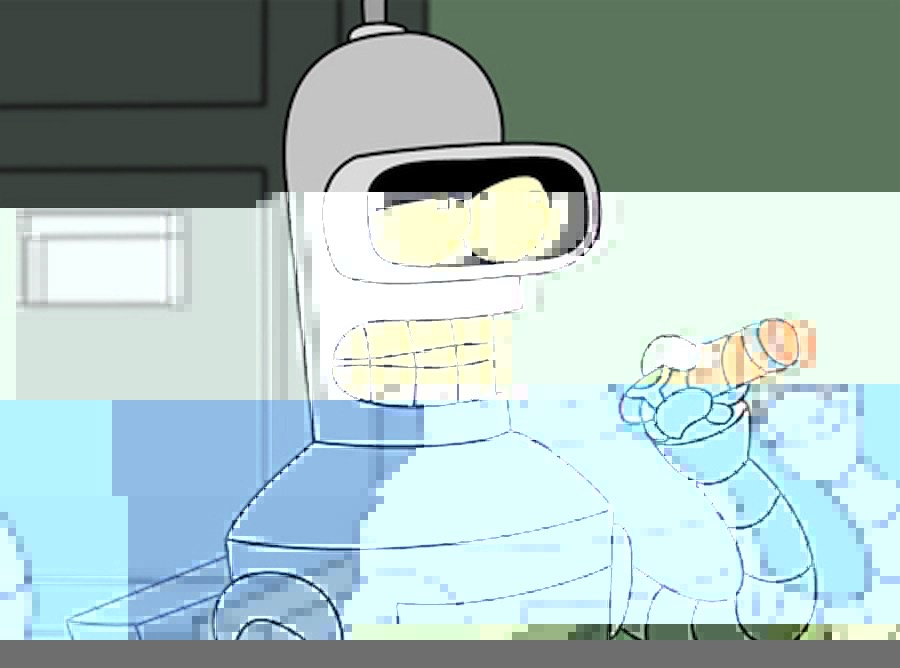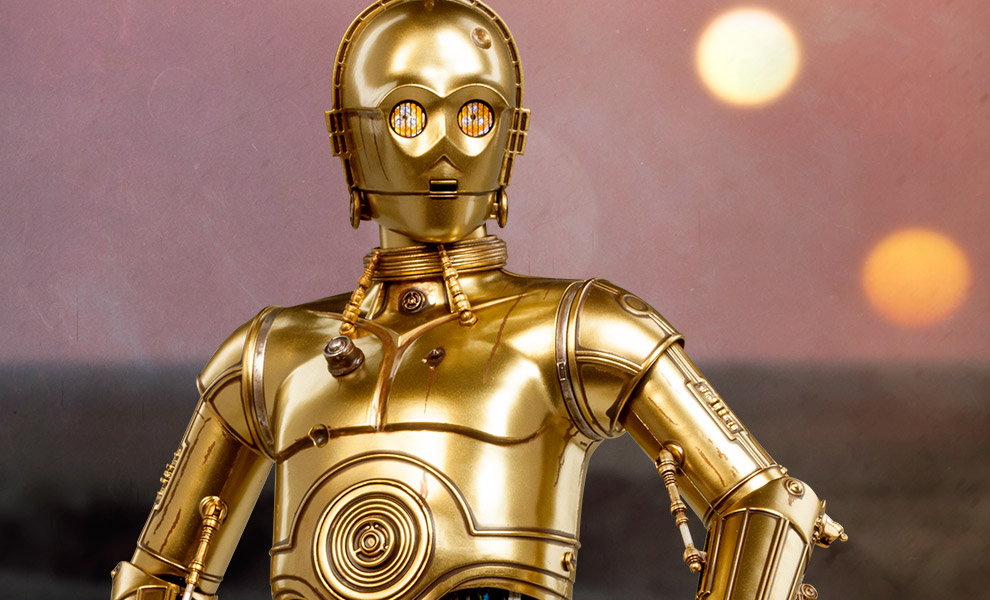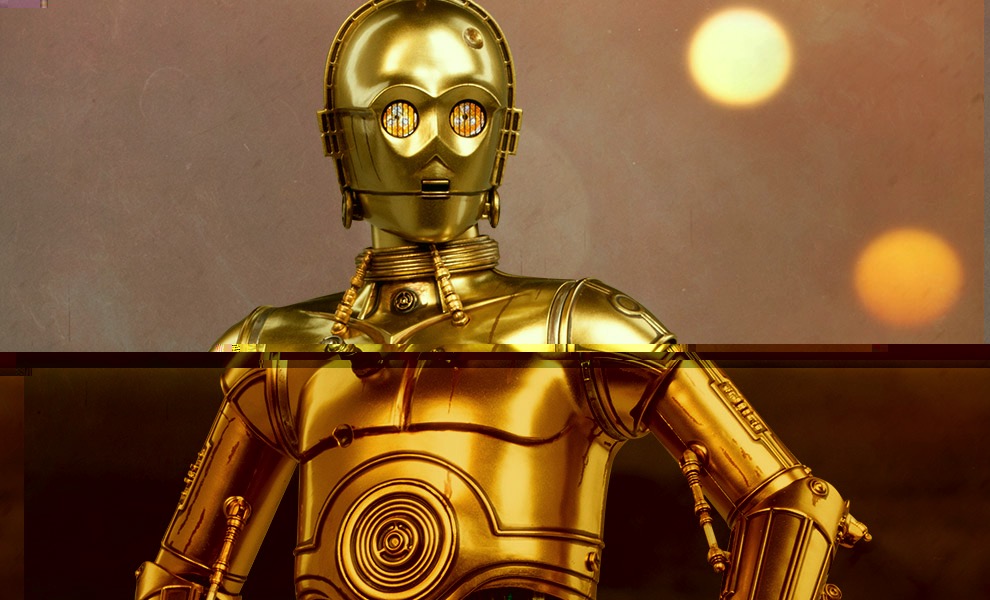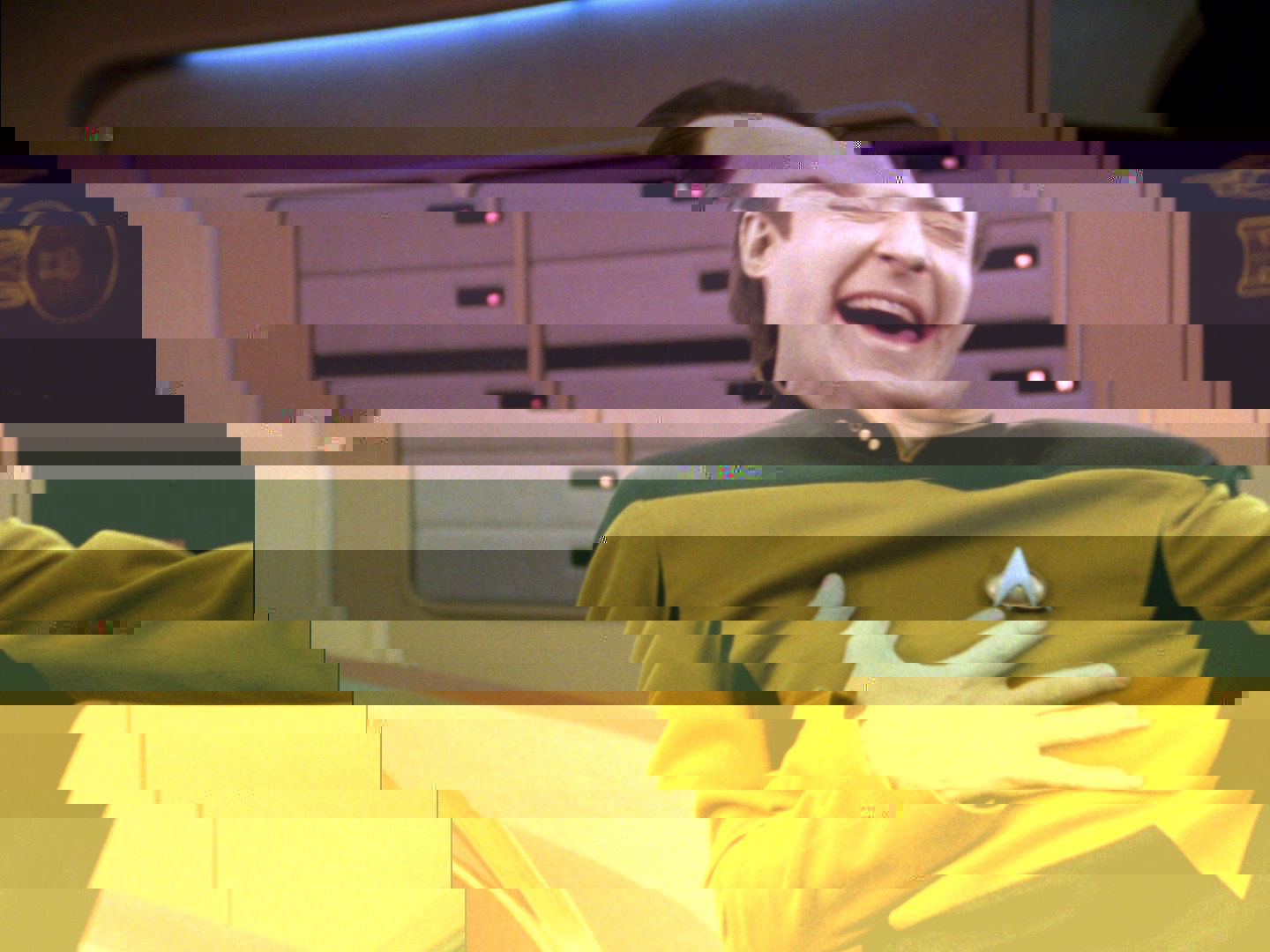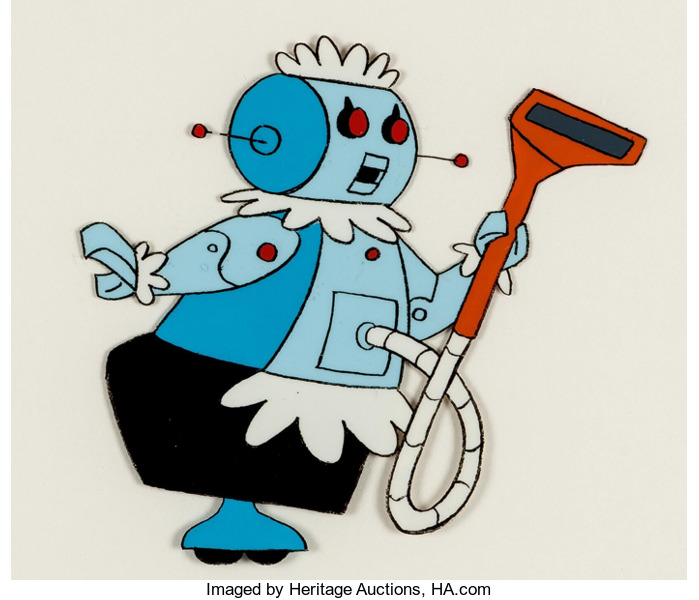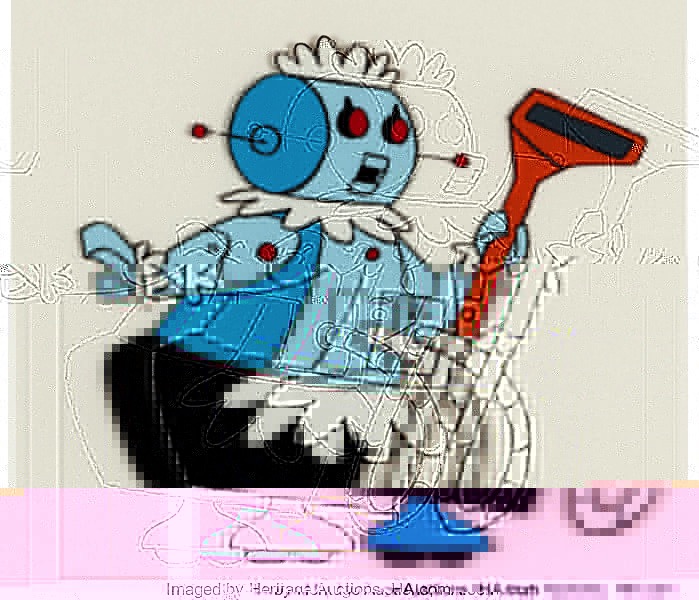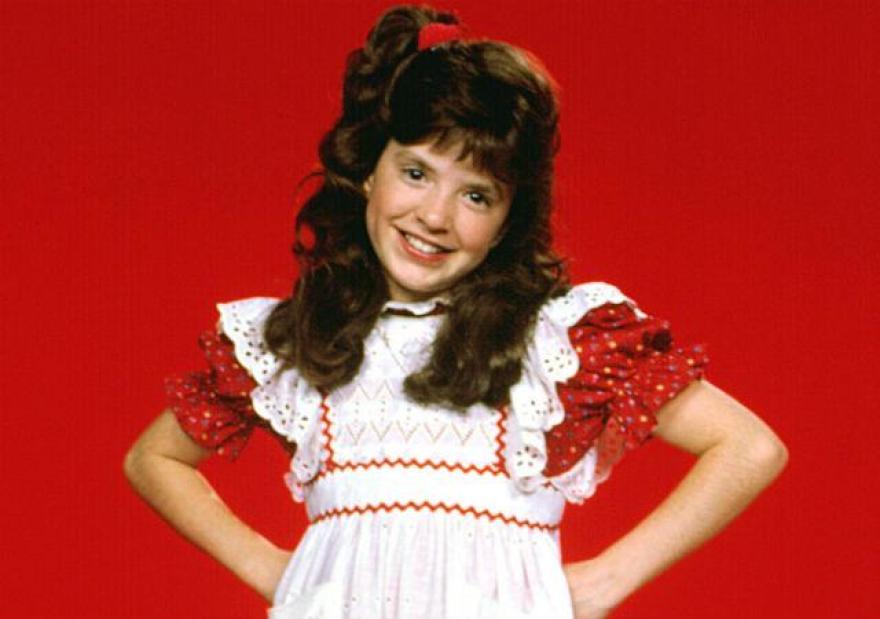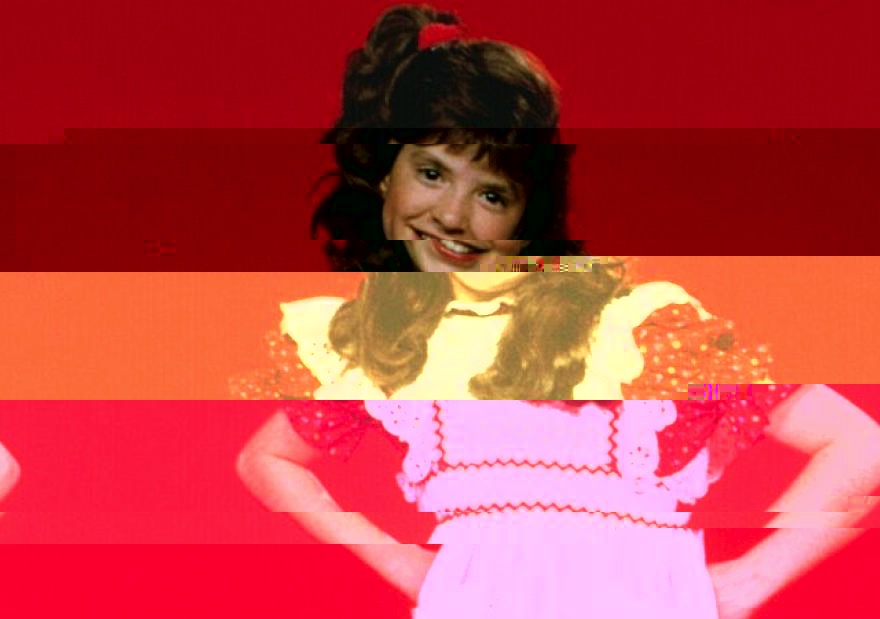For our glitch art project, we took images found on the Internet and opened them in TextEdit (for a Mac) as .txt files, which translates the imagery into code. Altering the code within creates "glitches" or mixed up colors and lines throughout the image when it is resaved as a .jpg file. For my images, I chose my pictures of my favorite TV and movie robots, to echo the highly digital way this art is created. In order to make the glitching meaningful, I took famous phrases or sayings that the characters would say, and periodically input them into the code. In that way, the robots in a way glitched themselves.
1. For the first one I chose the robot Bender from the TV show Futurama. In it, robots live and work alongside humans and have cheeky personalities and relationships. It is set in the year 3000, so aliens and robots alike live among us. Bender has a love/hate relationship with humans, and often "dreams" at night muttering the phrase "Kill all humans", although during the day he is a chain smoking alcoholic that is lazy and has no morals, he does maintain a friendship with his coworkers and doesn't attempt to kill them for the most part! I used his phrase "Kill all humans" throughout the image code to create the glitched one below.
2. For my second image I used a picture of C3PO from the Star Wars movies. C3PO is a very logical robot that is something of a worry wort. He is always unsure of himself and others, so I used the classic robot phrase "that does not compute" to echo his negativity.
3. For the third image I used one of my favorite "robots" of all time, who is actually an android. Just like his fellow robots above, he lives and works among humans in the future, and is even more humanoid than most of his metal counterparts. He rarely shows much emotion however, unless something had happened on the show to "glitch" him, and he turned even more human often to his detriment. In spite of his robotic interior, he was a very sentimental character, and also grappled with his less than human status. His phrase I used was "I am more than my code", which describes the complexity of Data's character.
4. The fourth image is one of my favorite childhood robots and the rare female robot - Rosie from the Jetsons. Although she took on the typical role of a robot as a servant for the family, she had a boisterous personality and was even caught on occasion crying over one thing or another. She even had relationships as well, calling into question whether she is more than "just a robot," and an interesting parallel between the suppression of certain races in our society, especially in the 1960's, when this show was first on. Her phrase is "A Robots job is never done." This took on some interesting glitch, which included almost an outline of her ghosted over the original image, suggesting that perhaps robots have souls after all...?
5. The last image is one of the robots I also watched as a child, but never really enjoyed except in an ironic way. As in - so bad its good. It is Vicki, the robot from Small Wonder. She was rather frustrating to watch, even though she was a little girl with super human strength and various robot powers, no one ever suspected her to be a robot, in spite of the fact that she never changed her outfit and spoke in a monotone robotic voice. At that time I found it simply to be annoying, but now as an adult watching old reruns I actually started to realize that Vicki had a lot of similarities to some people I know on the Autism Spectrum. I am certain the creators at the time did not intend her to be a metaphor for people with atypical neural qualities, but putting the show into the context of what is known today makes it much more poignant and meaningful. The phrase I chose for Vicki is "Autism Speaks", which is actually the name of an organization that claims they advocate for those on the Autism spectrum, but is actually not run by nor employs any people who are Autistic. It is a glitch in itself, and has made Vicki into a broken version of herself, when really there is nothing wrong with her at all.
I found glitch art to be very easy, and would be a great lesson to teach students at any age level, as long as it is used in a meaningful way, and not as a trick or a gimmick to make things look "cool." It did feel fairly easy, perhaps too easy to create imagery like this, but I would find it interesting combined with maybe other type of art, such as painting or video/animation. It definitely was an interesting way to create a postmodern type of art, substituting the computer for more traditional art media.

